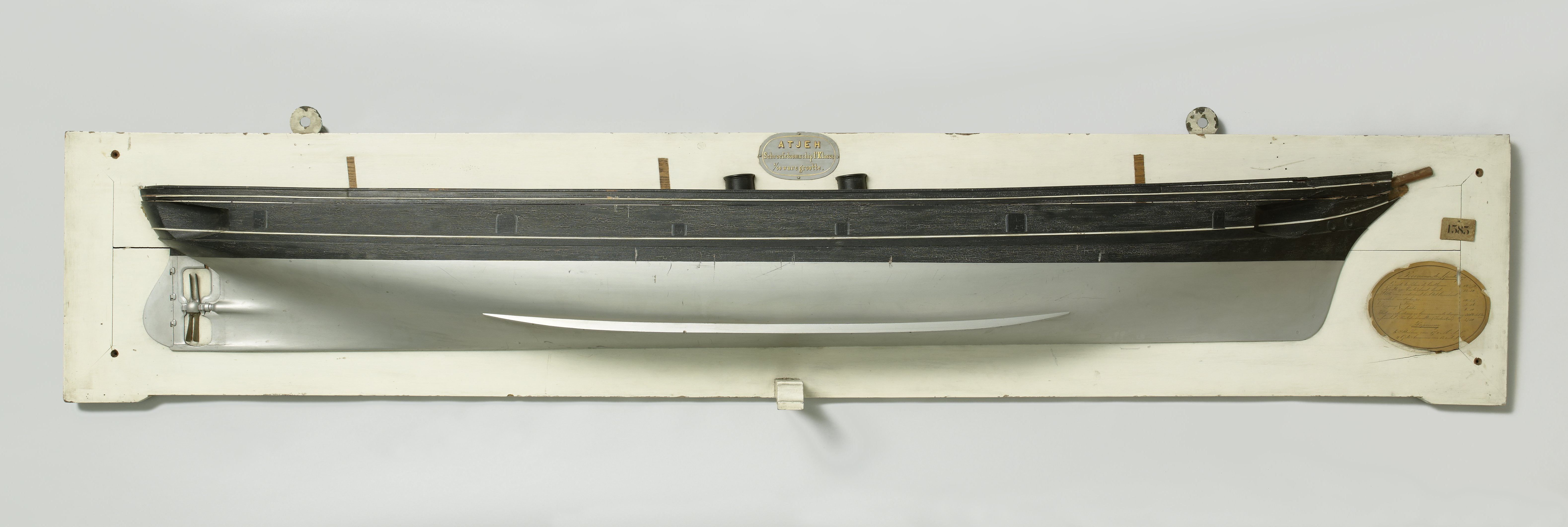Model Rijksmuseum Amsterdam, Netherlands. Original link
Call sign GQCN, laid down at the navy yard at Amsterdam, Netherlands on 3 March 1875, launched on 6 December 1876, commissioned on 1 November 1877, converted at the shipyard De Lastdrager, Den Helder, Netherlands into an accommodation ship in 1906, commissioned on 8 November 1906, also used as training ship for sailors and Royal Netherlands Navy Reserve, decommissioned as training ship on 21 May 1921, accommodation ship for the air force at Willemsoord until 1922, disarmed and stricken in 1929, sold for ƒ 23.501,00 to the N.V. Frank Rijsdijk’s industriële onderneming, Hendrik-Ido-Ambacht, Netherlands to be broken up on 4 June 1935. Iron-built and wood-planked, when she was sailing could the telescopic funnel be lowered and the screw lifted, frigate rigged,
Original specifications displacement 2.995 salt water tons-2.919 cubic metres, tonnage gross 2.160,17 tons (Moorsom classification), engineering room 1.163,53 tons and net excluded engineering room 996,65 tons, dimensions 80,00 (between perpendiculars)-84,30 (outside prow-outside rudder stern on load line)-91,85 (over all)x 12,10 (maximum on thrushes or within iron hull)-12,50 (on load line with wood planking hull) x 5,16 (design load line fore)-6,02 (design load line aft) x 7,67-10,22 (hold) metres, one 2.186 ihp horizontal direct working single expansion engine, speed 14,25 knots and a main armament of 6-17cm guns and 4-12cm guns. Designed in May 1874 as a cruiser for standard service included the Dutch East Indies. In advance was a ship designed with a length of 72 metres and building costs ƒ 1.500.000. Later was decided that the battery was to be covered by a tent deck and that under all conditions the boilers were kept below the waterline after consuming all bunkered coal. The armament was in advance to consist of 1-23cm Armstrong gun which could fire over port and starboard and 2-12cm Armstrong guns which could straight ahead or aft and sideways. Projected was a standard speed of 11 miles meaning a trial speed of 14 miles. Projected bunker capacity was to be enough for 600 geographic miles with 8 miles speed. Iron-built hull doubled with teak and zinc. The result were projected building costs of ƒ 1.325.000 included an more expensive engine and armament even ƒ 2.013.037. Originally was a crew of 200 men projected, which was increased to 229.



